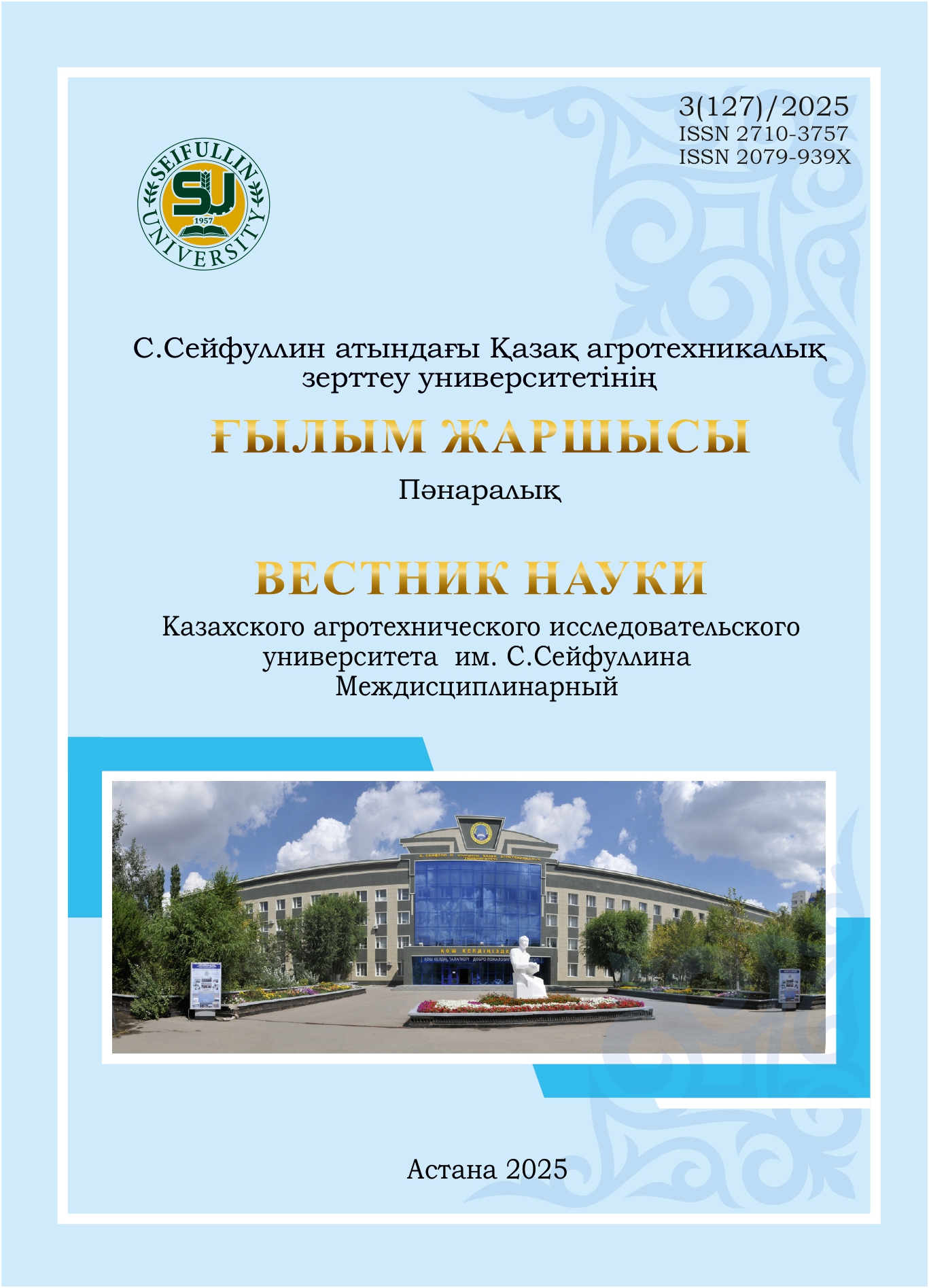Evaluation of drought tolerance of chickpea hybrid lines (Cicer arietinum L.) under the conditions of the Akmola region
DOI:
https://doi.org/10.51452/kazatu.2025.3(127).1987Keywords:
chickpea;breeding; drought tolerance; hybrid line.Abstract
Background and Aim. Chickpea (Cicer arietinum L.) is considered a drought-resistant crop, however moisture deficit can significantly reduce its productivity. Therefore, developing drought-resistant varieties adapted to the conditions of Northern Kazakhstan is a relevant task. The aim of this study was to evaluate chickpea hybrid lines for drought tolerance using both laboratory and field methods.
Materials and Methods. Field trials were conducted in the Akmola region. Drought tolerance was determined using methods including seed germination in sucrose solution, evaluation of plant survival after exposure to stress conditions, and calculation of drought tolerance index for the hybrid lines.
Results. According to the field trial data, hybrids 18/3-1-1 and 18/3-1-2-2 demonstrated the highest drought tolerance. Under conditions of osmotic stress induced by germination in sucrose solution, hybrid lines 36/3-3, 35-15 and 35-3 showed high resistance. Hybrid line 18/3-1-1-1 proved to be the most resistant in the survival test, maintaining viability and ability to recover after stress exposure.
Conclusion. The obtained results can be used in further breeding programs and may serve as a basis for the development of new drought-resistant chickpea variety adapted to the conditions of Northern Kazakhstan.

